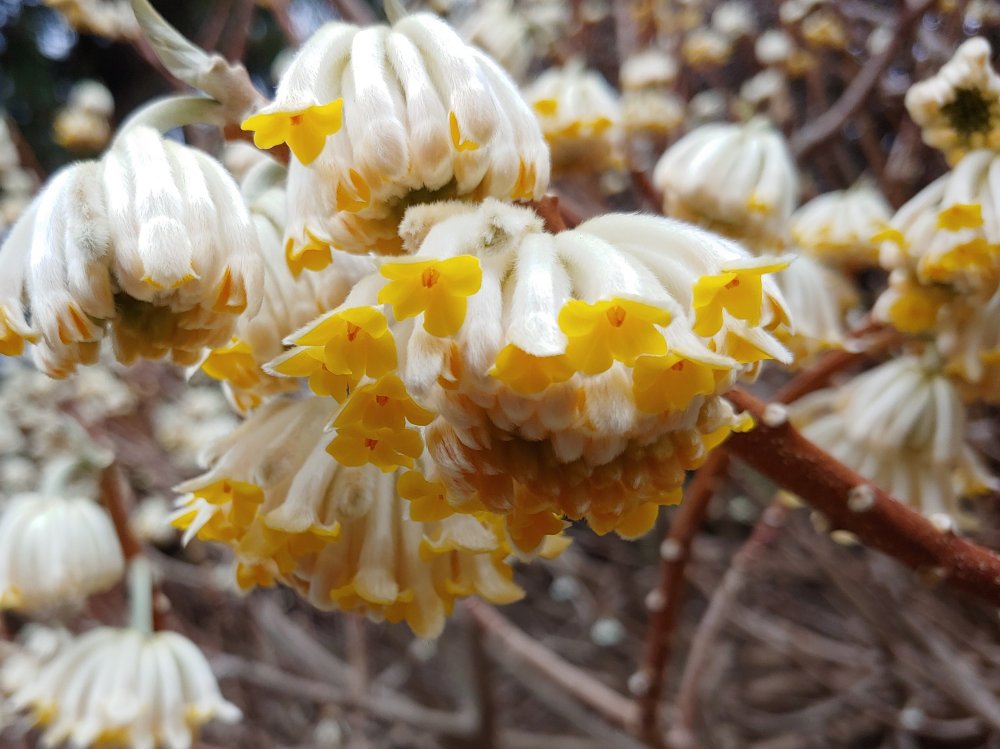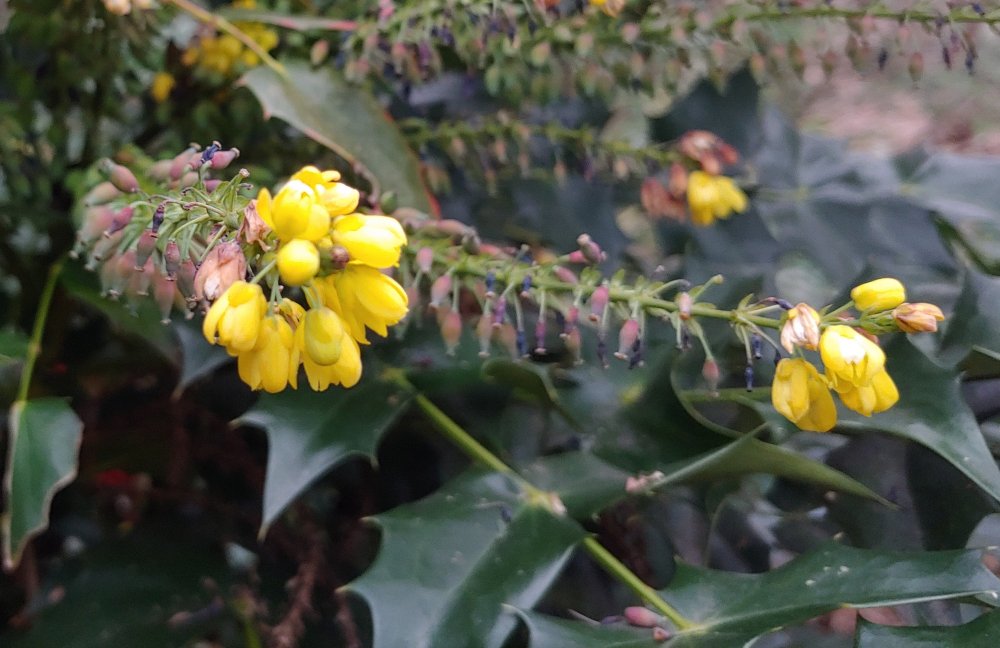A wide spreading mass of yellow flowered winter jasmine (Jasminum nudiflorum, below) tumbles over boulders at the koi pond’s edge. The cheerful blooms often brighten gray winter days, but a chilly late winter has delayed flowering into March when there are many superior blooms. There is no question that the jasmine can be an unruly nuisance. Its stems root at every point of soil contact, and while it roots into gaps between boulders, the number of boulders and lack of soil prevents it from spreading much further. On balance, I question its worthiness, but I presume the task to remove it would be formidable.

The tangle of jasmine stems is also an ideal residence for the Northern Brown water snakes that often inhabit the pond. Several have been run off, and perhaps all are gone to start the spring, but on occasions when pruning is required I am at the ready. Ready to do what, I don’t know, but hopefully not to fall into the frigid, chest high water.

While also delayed, on a much happier note the paperbushes (Edgeworthia chrysantha, above) are beginning to flower. While late flowering will shorten the blooming cycle since temperatures will inevitably warm up in the next few weeks, this favorite is my personal indicator that spring has arrived. When the first tubular, yellow tipped blooms are seen in early February, so much the better, but they are welcome at any time and there is no superior flower in March.

Flowers of leatherleaf mahonias (Mahonia bealei, above) are long past their peak. First color was seen in the mild first half of January, and with few pollinators present at the time there are likely to be fewer of the ornamental, grape-like fruits that must be harvested just as they ripen so birds do not pluck them to spread the seed. These were planted long before the word got around that mahonias are invasive, and while it can be argued whether their slow spread qualifies as invasive or as a minor nuisance, careful watching and a few minutes to strip the berries are a small price to pay for the late winter flowers.

The autumn flowering ‘Winter Sun’ (the last remaining flowers, above) and ‘Charity’ mahonias that often bloom into January are rarely pollinated by bees that are shacked up in the winter cold, and I’m uncertain if seed from these is as problematic as leatherleaf seems to be in some areas. In any case, both are delightful in flower.
Do you ever give tours of your gardens? Would be interested. Thanks.
Yes, we’ve hosted occasional tours by garden groups and anyone else interested.
Jasminum nudiflorum arrived in my garden by mistake. I got some cuttings of another jasmine from a home in Monterey, and the Jasminum nudiflorum got mixed in with them. It was completely unplanned, but now I must figure out what to do with it.
The lack of fragrance doesn’t bother me since I can’t smell anything, but it requires annual chopping back and I always expect a snake to pop out while I’m cutting.
That is something that I sort of dislike about it, not the concern of a snake, but that it performs better with aggressive pruning. No one wants to prune them here. They develop into unappealing thickets of spindly and nearly bare green stems that do not bloom much. I intend to prune mine back.
So useful to read the pros and cons of plants!!